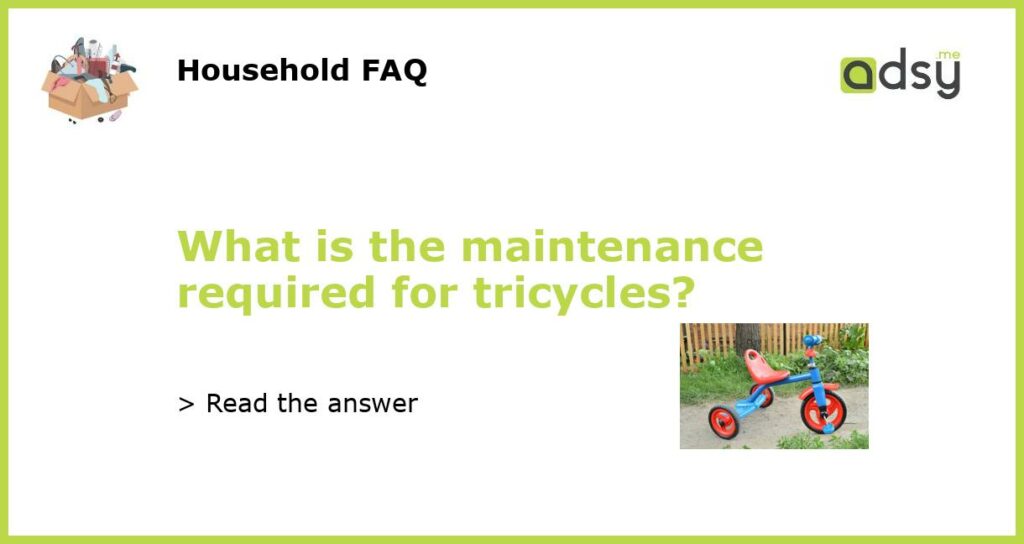5 Important Maintenance Tasks for Tricycles
Tricycles are a popular mode of transportation for people of all ages. They are versatile, easy to use, and provide a fun way to get around. However, like any other vehicle, tricycles require regular maintenance to ensure they are safe and in optimal working condition. In this article, we will discuss five important maintenance tasks for tricycles.
Regular Cleaning and Inspection
Just like bicycles and motorcycles, tricycles need regular cleaning and inspection to remove dirt, dust, and debris. Use a mild soap and water solution to clean the frame, wheels, and other parts of the tricycle. Avoid using high-pressure water as it can damage sensitive components.
While cleaning, make sure to inspect the tricycle for any signs of wear and tear. Check the tires for punctures, tread wear, and proper inflation. Inspect the brakes for excessive wear and ensure they are functioning properly. Look for loose or damaged parts, including the handlebars, pedals, and seat. If you notice any issues, it’s important to address them promptly to avoid further damage and potential accidents.
Lubricate Moving Parts
Tricycles have many moving parts that require regular lubrication to function smoothly. Apply a high-quality lubricant to the chain, gears, pedals, and any other moving parts that may be prone to friction. This will help reduce wear and tear, prevent rust, and ensure a smooth and efficient ride.
Before applying lubricant, clean the parts with a degreaser to remove any built-up dirt and old grease. Once cleaned, apply a small amount of lubricant to each moving part, ensuring that it is evenly distributed. Avoid over-lubricating as excess oil or grease can attract dirt and cause further damage.
Check and Adjust the Brakes
Brakes are a critical component of any tricycle, as they ensure safe stopping and control. Regularly check the brake pads for wear and replace them if necessary. You should also inspect the brake cables to ensure they are free of rust, fraying, or any other damage.
To test the brakes, apply gentle pressure to the brake levers while stationary. The brakes should engage smoothly and without any excess noise or resistance. If you notice any issues, such as squeaking, grinding, or a loss of stopping power, it is important to have them professionally inspected and adjusted.
Maintain Proper Tire Pressure
Proper tire pressure is crucial for a safe and comfortable ride. Insufficient tire pressure can lead to increased rolling resistance, decreased stability, and an increased risk of punctures. On the other hand, overinflated tires can result in a harsh ride and reduced traction.
Check the tricycle’s tire pressure regularly using a bicycle pump or a pressure gauge. The recommended tire pressure can usually be found on the side of the tire or in the tricycle’s user manual. Inflate the tires to the recommended pressure, making sure they are evenly inflated and there are no visible leaks.
Store Properly
When not in use, it is important to store tricycles properly to protect them from the elements and prevent damage. If possible, store the tricycle indoors in a dry and temperature-controlled environment. This will help prevent rust, deterioration of components, and damage from UV rays.
If indoor storage is not an option, consider using a tarp or a tricycle cover to protect it from rain, dust, and extreme temperatures. Make sure to secure the cover properly so that it does not blow off in the wind or come into contact with sharp objects that could damage the tricycle.
Regular maintenance is essential for keeping tricycles in good working condition. By following these five maintenance tasks, tricycle owners can extend the lifespan of their vehicles and enjoy safe and comfortable rides for years to come.






